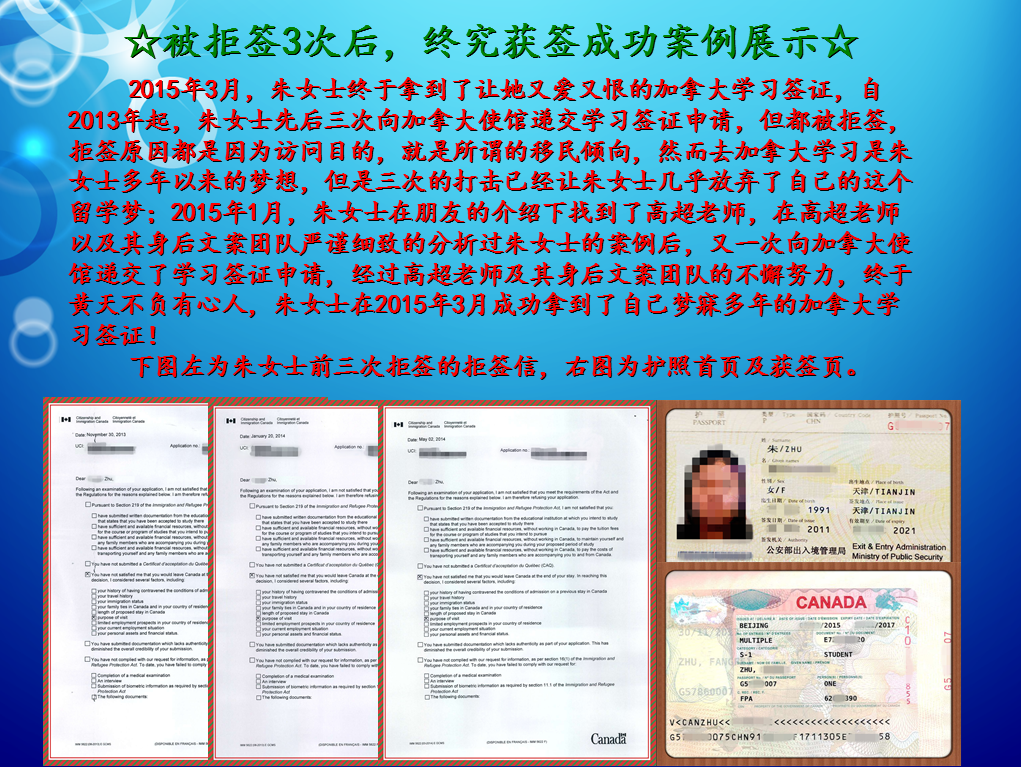GMAT阅读材料16(附答案).
2017-08-11 306阅读
以下为大家提供一篇GMAT阅读材料,附有题目及答案,帮助大家备考GMAT阅读。希望大家取得GMAT考试高分!
In 1896 a Georgia couple suing for (sue for: v.控告) damages in the accidental death of their two year old was told that since the child had made no real economic contribution to the family, there was no liability for damages. In contrast, less than a century later, in 1979, the parents of a three-year-old sued in New York for accidental-death damages and won an award of $750,000.
The transformation in social values implicit in juxtaposing these two incidents is the subject of Viviana Zelizer’s excellent book, Pricing the Priceless Child. During the nineteenth century, she argues, the concept of the “usul” child who contributed to the family economy gave way gradually to the present-day notion of the “useless” child who, though producing no income for, and indeed extremely costly to, its parents, is yet considered emotionally “priceless.” Well established among segments of the middle and upper classes by the mid-1800’s, this new view of childhood spread throughout society in the late-nineteenth and early-twentieth centuries as rormers introduced child-labor regulations and compulsory education (compulsory education: n.义务教育) laws predicated in part on the assumption that a child’s emotional value made child labor taboo.
For Zelizer the origins of this transformation were many and complex. The gradual erosion of children’s productive value in a maturing industrial economy, the decline in birth and death rates, especially in child mortality, and the development of the companionate family (a family in which members were united by explicit bonds of love rather than duty) were all factors critical in changing the assessment of children’s worth. Yet “expulsion of children from the ‘cash nexus (cash nexus: 金钱关系, 现金(交易)关系),’ although clearly shaped by profound changes in the economic, occupational, and family structures,” Zelizer maintains, “was also part of a cultural process ‘of sacrelization’ of children’s lives.” Protecting children from the crass business world became enormously important for late-nineteenth-century middle-class Americans, she suggests; this sacralization was a way of resisting what they perceived as the relentless corruption of human values by the marketplace.
In stressing the cultural determinants of a child’s worth, Zelizer takes issue with practitioners of the new “sociological economics,” who have analyzed such traditionally sociological topics as crime, marriage, education, and health solely in terms of their economic determinants. Allowing only a small role for cultural forces in the form of individual “prerences,” these sociologists tend to view all human behaviors as directed primarily by the principle of maximizing economic gain. Zelizer is highly critical of this approach, and emphasizes instead the opposite phenomenon: the power of social values to transform price. As children became more valuable in emotional terms, she argues, their “exchange” or “surrender” value on the market, that is, the conversion of their intangible worth into cash terms, became much greater.
1. It can be inferred from the passage that accidental-death damage awards in America during the nineteenth century tended to be based principally on the
(A) earnings of the person at time of death
(B) wealth of the party causing the death
(C) degree of culpability of the party causing the death
(D) amount of money that had been spent on the person killed
(E) amount of suffering endured by the family of the person killed
2. It can be inferred from the passage that in the early 1800’s children were generally regarded by their families as individuals who
(A) needed enormous amounts of security and affection
(B) required constant supervision while working
(C) were important to the economic well-being of a family
(D) were unsuited to spending long hours in school
(E) were financial burdens assumed for the good of society
3. Which of the following alternative explanations of the change in the cash value of children would be most likely to be put forward by sociological economists as they are described in the passage?
(A) The cash value of children rose during the nineteenth century because parents began to increase their emotional investment in the upbringing of their children.
(B) The cash value of children rose during the nineteenth century because their expected earnings over the course of a lifetime increased greatly.
(C) The cash value of children rose during the nineteenth century because the spread of humanitarian ideals resulted in a wholesale reappraisal of the worth of an individual.
(D) The cash value of children rose during the nineteenth century because compulsory education laws reduced the supply, and thus raised the costs, of available child labor.
(E) The cash value of children rose during the nineteenth century because of changes in the way negligence law assessed damages in accidental death cases.
4. The primary purpose of the passage is to
(A) review the literature in a new academic sub-field
(B) present the central thesis of a recent book
(C) contrast two approaches to analyzing historical change
(D) rute a traditional explanation of a social phenomenon
(E) encourage further work on a neglected historical topic
5. It can be inferred from the passage that which of the following statements was true of American families over the course of the nineteenth century?
(A) The average size of families grew considerably.
(B) The percentage of families involved in industrial work declined dramatically.
(C) Family members became more emotionally bonded to one another.
(D) Family members spent an increasing amount of time working with each other.
(E) Family members became more economically dependent on each other.
6. Zelizer rers to all of the following as important influences in changing the assessment of children’s worth EXCEPT changes in
(A) the mortality rate
(B) the nature of industry
(C) the nature of the family
(D) attitudes toward rorm movements
(E) attitudes toward the marketplace
7. Which of the following would be most consistent with the practices of sociological economics as these practices are described in the passage?
(A) Arguing that most health-care professionals enter the field because they believe it to be the most socially usul of any occupation
(B) Arguing that most college students choose majors that they believe will lead to the most highly paid jobs available to them
(C) Arguing that most decisions about marriage and divorce are based on rational assessments of the likelihood that each partner will remain committed to the relationship
(D) Analyzing changes in the number of people enrolled in colleges and universities as a function of changes in the economic health of these institutions
(E) Analyzing changes in the ages at which people get married as a function of a change in the average number of years that young people have lived away from their parents
参考答案:ACBB CDB
以上GMAT阅读材料希望能够帮助大家备考,祝同学们考试顺利!
GMAT阅读材料16(附答案)GMAT阅读材料GMAT阅读材料GMAT阅读材料以下为大家提供一篇GMAT阅读材料,附有题目及答案,帮助大家备考GMAT阅读。希望大家取得GMAT考试高分!
In 1896 a Georgia couple suing for (sue for: v.控告) damages in the accidental death of their two year old was told that since the child had made no real economic contribution to the family, there was no liability for damages. In contrast, less than a century later, in 1979, the parents of a three-year-old sued in New York for accidental-death damages and won an award of $750,000.
The transformation in social values implicit in juxtaposing these two incidents is the subject of Viviana Zelizer’s excellent book, Pricing the Priceless Child. During the nineteenth century, she argues, the concept of the “usul” child who contributed to the family economy gave way gradually to the present-day notion of the “useless” child who, though producing no income for, and indeed extremely costly to, its parents, is yet considered emotionally “priceless.” Well established among segments of the middle and upper classes by the mid-1800’s, this new view of childhood spread throughout society in the late-nineteenth and early-twentieth centuries as rormers introduced child-labor regulations and compulsory education (compulsory education: n.义务教育) laws predicated in part on the assumption that a child’s emotional value made child labor taboo.
For Zelizer the origins of this transformation were many and complex. The gradual erosion of children’s productive value in a maturing industrial economy, the decline in birth and death rates, especially in child mortality, and the development of the companionate family (a family in which members were united by explicit bonds of love rather than duty) were all factors critical in changing the assessment of children’s worth. Yet “expulsion of children from the ‘cash nexus (cash nexus: 金钱关系, 现金(交易)关系),’ although clearly shaped by profound changes in the economic, occupational, and family structures,” Zelizer maintains, “was also part of a cultural process ‘of sacrelization’ of children’s lives.” Protecting children from the crass business world became enormously important for late-nineteenth-century middle-class Americans, she suggests; this sacralization was a way of resisting what they perceived as the relentless corruption of human values by the marketplace.
In stressing the cultural determinants of a child’s worth, Zelizer takes issue with practitioners of the new “sociological economics,” who have analyzed such traditionally sociological topics as crime, marriage, education, and health solely in terms of their economic determinants. Allowing only a small role for cultural forces in the form of individual “prerences,” these sociologists tend to view all human behaviors as directed primarily by the principle of maximizing economic gain. Zelizer is highly critical of this approach, and emphasizes instead the opposite phenomenon: the power of social values to transform price. As children became more valuable in emotional terms, she argues, their “exchange” or “surrender” value on the market, that is, the conversion of their intangible worth into cash terms, became much greater. 上1234下
共4页
阅读全文留学咨询
更多出国留学最新动态,敬请关注澳际教育手机端网站,并可拨打咨询热线:400-601-0022
留学热搜
相关推荐
- 专家推荐
- 成功案例
- 博文推荐

Copyright 2000 - 2020 北京澳际教育咨询有限公司
www.aoji.cn All Rights Reserved | 京ICP证050284号
总部地址:北京市东城区 灯市口大街33号 国中商业大厦2-3层









高国强 向我咨询
行业年龄 12年
成功案例 3204人
留学关乎到一个家庭的期望以及一个学生的未来,作为一名留学规划导师,我一直坚信最基本且最重要的品质是认真负责的态度。基于对学生和家长认真负责的原则,结合丰富的申请经验,更有效地帮助学生清晰未来发展方向,顺利进入理想院校。
Amy GUO 向我咨询
行业年龄 17年
成功案例 4539人
一切的一切从现在开始.用自己的态度闯出一片天
薛占秋 向我咨询
行业年龄 11年
成功案例 1869人
从业3年来成功协助数百同学拿到英、美、加、澳等各国学习签证,递签成功率90%以上,大大超过同业平均水平。
Tara 向我咨询
行业年龄 7年
成功案例 1869人